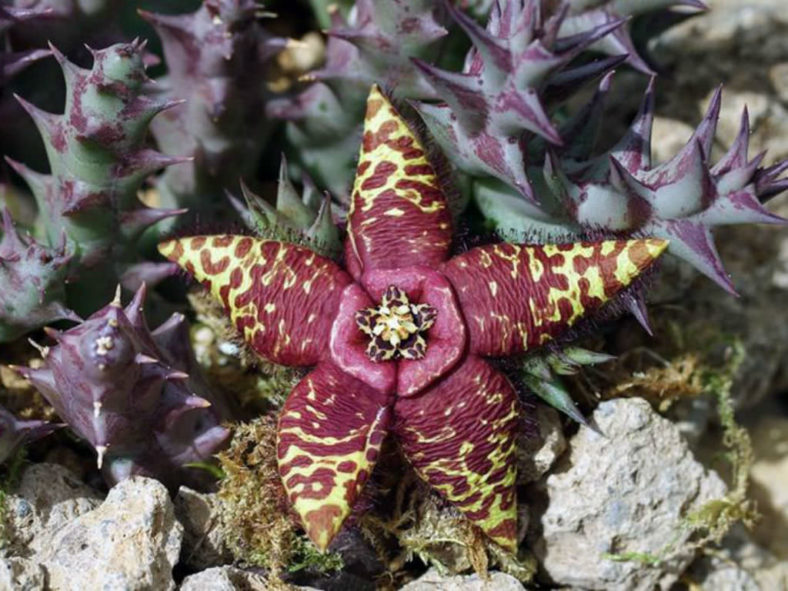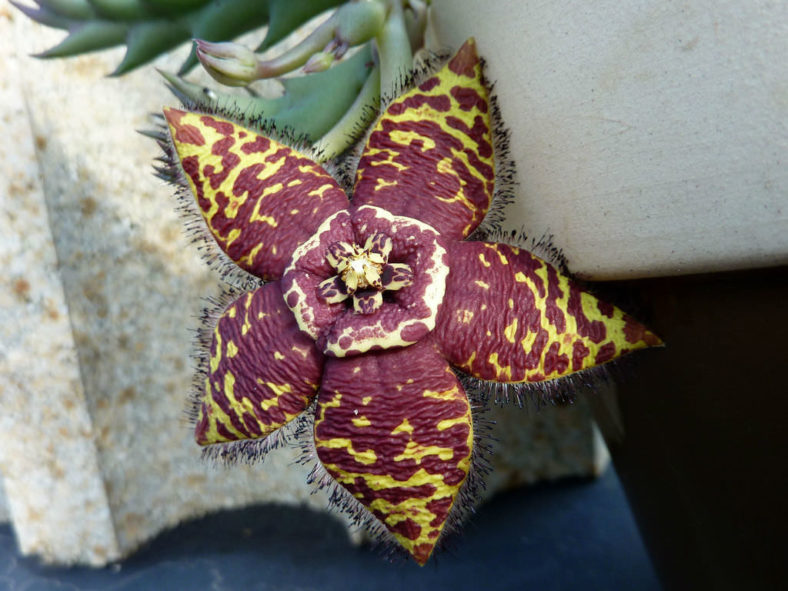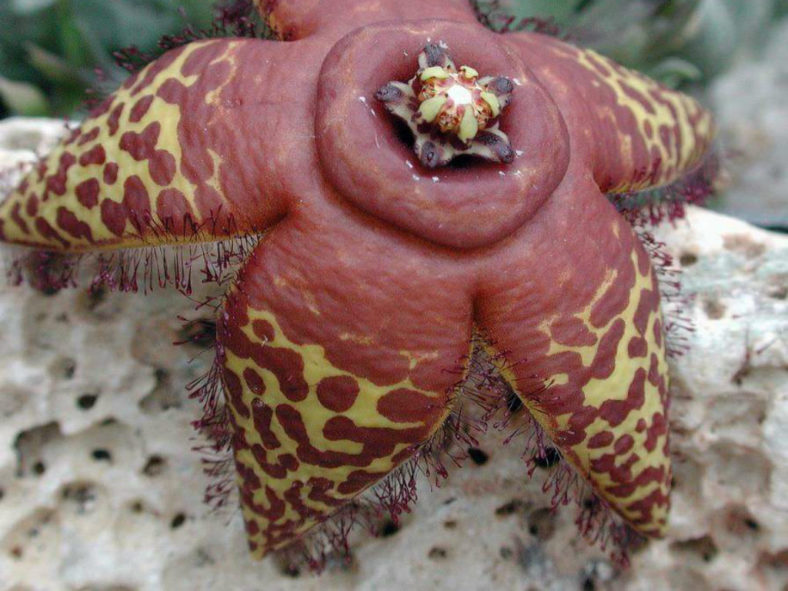Scientific Name
Orbea semota (N.E. Br.) L.C. Leach
Synonym(s)
Ceropegia semota, Ceropegia semota subsp. semota, Stapelia discoidea, Stapelia kagerensis, Stapelia molonyae, Stapelia semota
Scientific Classification
Family: Apocynaceae
Subfamily: Asclepiadoideae
Tribe: Ceropegieae
Subtribe: Stapeliinae
Genus: Orbea
Etymology
The specific epithet "semota" (pronounced "sem-OH-tuh") means "removed; remote, distant, retired," although its exact reference in this species is unclear.
Origin
Orbea semota is native to Kenya, Tanzania, and Rwanda. It grows on rocky outcrops.
Description
Orbea semota is a much-branched succulent that forms a mat of thick, fleshy, erect or decumbent stems with stout, conical teeth. The stems can grow up to 4 inches (10 cm) long, rooting freely in contact with the soil. They can measure up to 0.7 inches (1.8 cm) in thickness, excluding teeth. The teeth are stout, conical, and can grow up to 0.5 inches (1.2 cm) long.
The flowers are star-shaped, transversely wrinkled, and appear solitary or in a group of several from any part of the stem from summer to fall, reaching a diameter of up to 2 inches (5 cm). They are dark maroon or brown with yellow marks at the tips or throughout the lobes. The lobes are acute, ovate, and often recurved along the ciliate margins with vibratile club-shaped hairs.
Subspecies and Varieties

Hardiness
USDA hardiness zones 11a to 11b: from 40°F (4.4°C) to 50°F (10°C).
How to Grow and Care
Several species are fairly easy to grow. Others, often those with slightly hairy stems and the more unusual flowers, are more challenging and require careful watering (with some fertilizer) during the growing season and complete water withdrawal during the winter months. A minimum winter temperature of 50°F (10°C) is acceptable if plants are kept dry. A heated, growing bench or incubator can help delicate plants survive the colder months. However, many species live under shrubs in their habitat and prefer light shade rather than full sun.
A gritty compost is essential, and clay pots are advisable for the more delicate species. Some growers prefer mineral-only compost to minimize the chance of a fungal attack on the roots. A layer of grit on the compost surface prevents moisture from accumulating around the base of stems.
Keeping Stapelias and their roots free of pests such as mealybugs is crucial, as fungal attacks often occur due to damage to stems by insects.
Learn more at How to Grow and Care for Stapelia.
Links
- Back to genus Orbea
- Succupedia: Browse succulents by Scientific Name, Common Name, Genus, Family, USDA Hardiness Zone, Origin, or cacti by Genus
Photo Gallery
Click on a photo to see a larger version.

